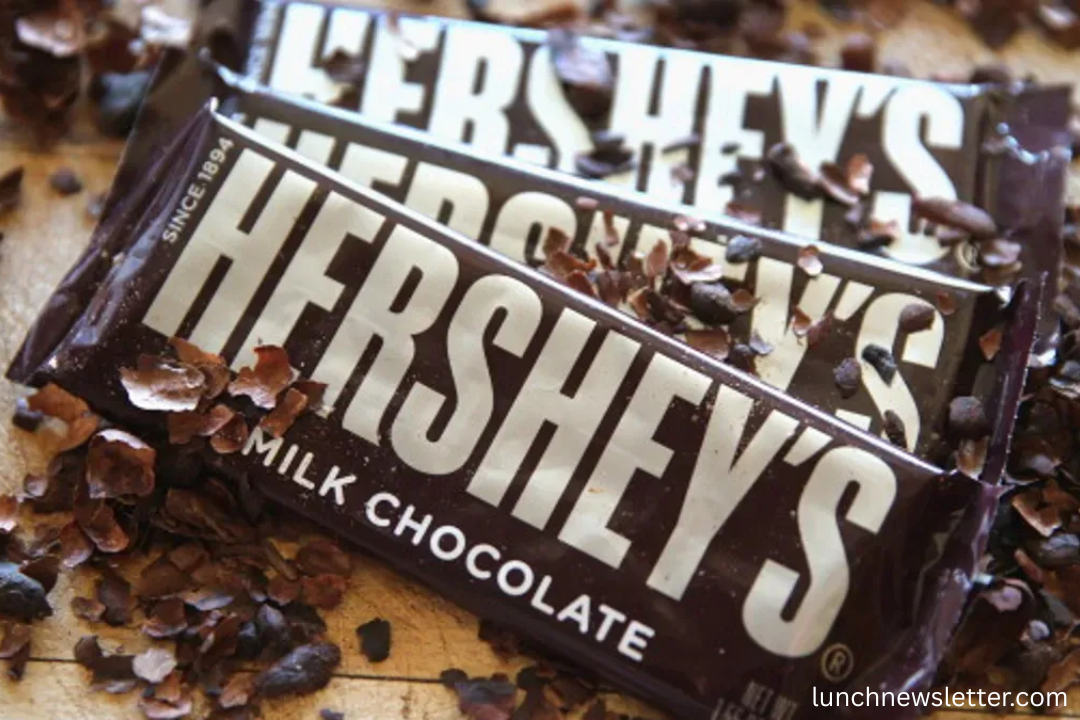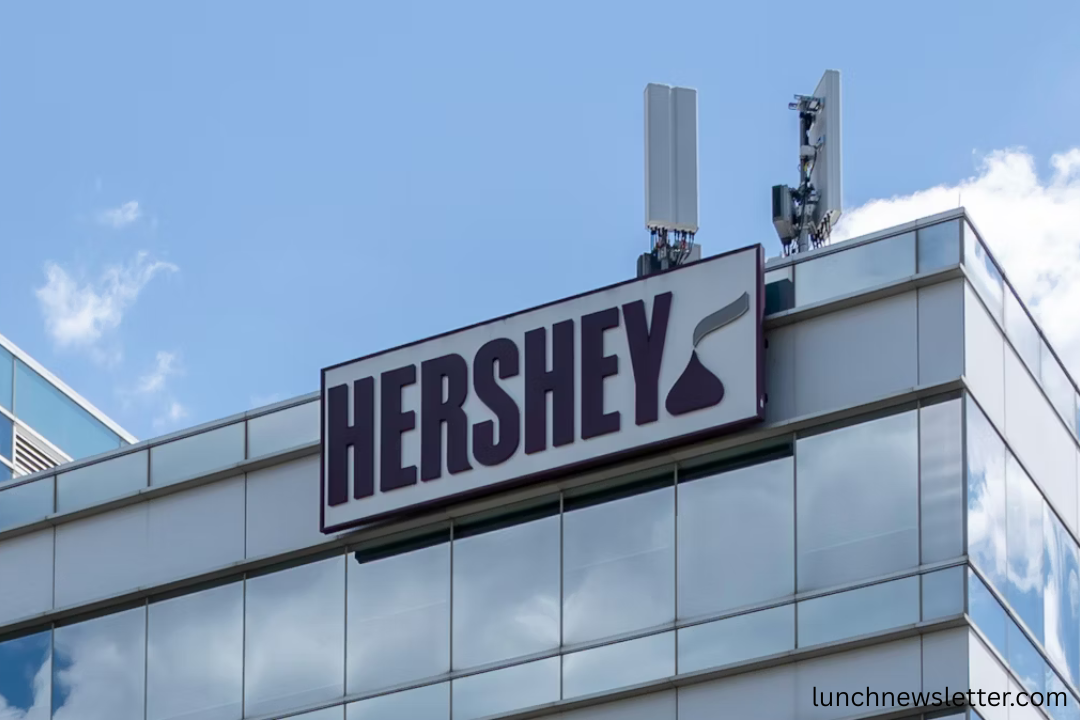Hershey, one of the world’s most iconic chocolate brands, is formally requesting a cocoa tariff exemption from the White House. The move comes amid a perfect storm of cocoa price surges, inflationary pressure, and unstable global supply chains, all of which are threatening the cost structure of chocolate manufacturing. Hershey argues that current cocoa tariffs are unsustainable and could lead to higher consumer prices and reduced product offerings.
With cocoa prices reaching record highs in 2024 and early 2025, Hershey is appealing directly to U.S. trade officials to lift or ease import duties on raw cocoa imports. As one of the largest buyers of cocoa globally, Hershey’s appeal reflects the broader challenges facing the food and confectionery industry.
Cocoa Price Surge Hits Hershey Hard
In recent months, cocoa prices have soared to unprecedented levels due to poor harvests in West Africa, geopolitical instability, and climate-related disruptions. Côte d’Ivoire and Ghana, which supply over 60% of the world’s cocoa, have reported drastically lower yields this season.
Hershey has been hit particularly hard by these market shocks. The company relies on consistent access to high-quality cocoa beans to produce its wide range of chocolate products. Rising raw material costs, combined with tariffs, have inflated production expenses at a time when consumer inflation is already straining household budgets.
Hershey’s leadership warns that if cocoa tariffs are not reduced, the company may be forced to raise product prices or reduce the variety of goods available in stores.
Why Tariff Relief Matters to Hershey
Tariffs on cocoa imports currently stand at levels that Hershey believes are outdated and harmful, especially during an ongoing global commodity crisis. These tariffs were initially implemented to protect domestic agriculture or encourage diversified sourcing. However, the U.S. does not produce cocoa domestically in any meaningful quantity.
Hershey argues that the cocoa tariff effectively taxes American consumers and manufacturers. Without local cocoa production, U.S. chocolate makers like Hershey have no choice but to import from abroad. By seeking a tariff cut, Hershey hopes to stabilize production costs and maintain competitive pricing for its customers.
How Tariffs Affect Chocolate Prices in the U.S.
Consumers are already feeling the impact of global cocoa price increases. Hershey’s chocolate bars, seasonal items, and snack products have all experienced price hikes over the past two years. If tariffs remain in place, these prices may rise even further.
Chocolate is a household staple for millions of Americans. Whether it’s a Hershey bar, Reese’s Peanut Butter Cup, or Hershey’s Kisses, these products depend heavily on affordable cocoa. Tariffs, combined with market volatility, threaten the availability and pricing of these items.
Industry analysts point out that Hershey’s appeal is also a strategic move to avoid losing market share to international competitors who may benefit from more favorable trade agreements.
Hershey’s Global Cocoa Supply Chain Under Pressure
Hershey operates a complex and global supply chain that includes cocoa sourcing, processing, and distribution. The company has long-standing relationships with cocoa farmers in West Africa and investments in ethical sourcing programs.
Despite these efforts, the cocoa supply chain is now under extreme pressure. Hershey’s sourcing teams face limited crop availability, longer shipping delays, and increased freight costs—all of which compound the challenges posed by tariffs.
The company has invested heavily in sustainable farming programs to secure its future cocoa needs, but these investments take years to yield results. In the short term, Hershey views tariff relief as an urgent solution to maintain supply chain efficiency and product affordability.
White House Response to Hershey’s Request
While the White House has not issued a formal response to Hershey’s request, trade officials have acknowledged the impact of cocoa tariffs on manufacturers. The administration is reportedly reviewing several tariff-related proposals from multiple industries affected by inflation and supply disruptions.
Experts say that Hershey’s appeal may receive sympathetic consideration, particularly given cocoa’s non-domestic nature and the importance of affordable food production. However, trade policy is a complex and politically sensitive arena, and any tariff change would likely involve extensive review and industry consultation. Hershey’s case could also set a precedent for other food manufacturers facing similar import challenges.
Hershey’s Role in the U.S. Economy

Hershey is not just a chocolate maker—it’s a significant contributor to the American economy. The company employs thousands of workers in manufacturing, logistics, and retail operations and supports countless indirect jobs through its supply chain partnerships.
Hershey’s headquarters in Pennsylvania remains a central hub of operations, and its products are distributed nationwide. Tariff relief would benefit Hershey and help stabilize a larger segment of the U.S. food manufacturing industry.
Supporters of the company’s appeal argue that relieving tariff pressure on Hershey is an investment in American jobs, consumer affordability, and economic resilience.
Consumer Reaction to Hershey’s Tariff Appeal
Public sentiment toward Hershey’s tariff appeal has mainly been positive, especially among consumers concerned about rising grocery costs. Social media conversations highlight fears of “another price hike” and support for measures that could keep chocolate affordable.
Still, some critics argue that large corporations like Hershey should absorb the increased costs rather than seek exemptions. Others call for more transparency in how savings from tariff relief would be passed on to consumers.
Hershey maintains that its goal is to ensure long-term product stability and affordability and that tariff relief would benefit both the company and its customers.
The Broader Food Industry Watches Closely
Other planters are monitoring Hershey’s tariff appeal. If we closely monitor Hershey’s tariff appeal, the decision could lead to a wave of similar requests from companies importing ingredients like coffee, sugar, or palm oil.
Industry groups see Hershey’s strategy as a potential blueprint for navigating trade challenges in the current global economy. Trade attorneys and policy analysts believe that a well-documented, consumer-focused appeal—like Hershey’s—has a more substantial chance of success.
The outcome of Hershey’s request may shape trade policy conversations for years to come, particularly as supply chains become increasingly global and interdependent.
What’s Next for Hershey?
As Hershey awaits a decision from the White House, the company is taking proactive steps to adapt. These include diversifying cocoa-sourcing regions, investing in sustainable farming, and exploring advanced logistics technologies.
However, executives reiterate that without immediate tariff relief, the road ahead could become more challenging. Hershey is committed to maintaining its market position while minimizing consumer impact—and that means pushing for every available advantage in a volatile market.
If the tariff exemption is granted, Hershey plans to reinvest savings into supply chain improvements and price stabilization strategies.
Frequently Asked Questions (FAQ’s)
Why is Hershey requesting a cocoa tariff cut?
Hershey is seeking a cocoa tariff cut to reduce rising production costs caused by global cocoa price surges, aiming to keep chocolate products affordable for consumers.
How do cocoa tariffs affect Hershey and its customers?
Cocoa tariffs increase the cost of importing cocoa, raising Hershey’s production expenses. These costs often lead to higher retail prices for consumers.
What are the main reasons why rising cocoa prices are affecting Hershey?
Hershey faces high cocoa prices due to poor harvests in West Africa, climate change, and political instability in key cocoa-producing countries.
Does the U.S. produce cocoa domestically for Hershey to use?
The U.S. does not produce significant quantities of cocoa. Hershey depends entirely on imports, making it directly vulnerable to international tariffs and market conditions.
Will Hershey lower prices if the tariff cut is approved?
Hershey has indicated that tariff relief would help stabilize production costs, which could limit future price increases and support consumer affordability.
What impact does Hershey’s appeal have on the broader food industry?
Hershey’s appeal could set a precedent for other food manufacturers who rely on imported ingredients and may lead to broader trade policy discussions.
How has the public responded to Hershey’s tariff request?
Many consumers have supported Hershey’s move, especially those concerned about inflation. Some critics, however, want greater transparency on how savings will be used.
What steps is Hershey taking beyond the tariff appeal?
In addition to requesting tariff relief, Hershey is investing in sustainable sourcing, exploring new supply regions, and enhancing logistics to secure its cocoa supply chain.
Conclusion
Hershey’s appeal for a cocoa tariff cut reflects the intersection of trade policy, global agriculture, and everyday consumer economics. The company’s request aims to ensure that Hershey continues to deliver affordable, high-quality chocolate products to the market despite unprecedented price pressures. By advocating for lower cocoa tariffs, Hershey is not only protecting its bottom line but also making a broader case for responsible and flexible trade policies. Whether or not the White House grants this request, Hershey has brought a critical conversation about cocoa, commerce, and consumer cost to the forefront of national discourse.
